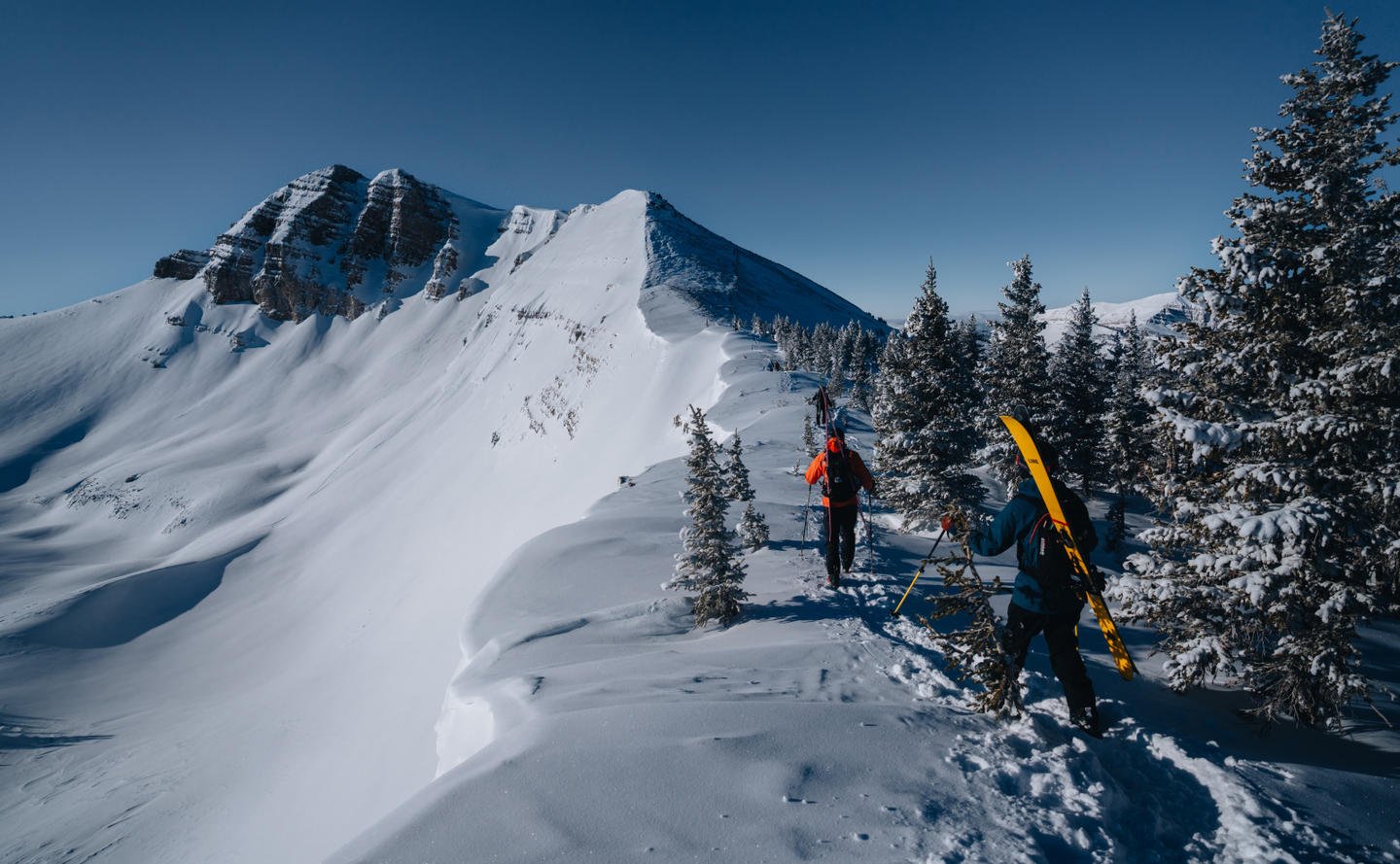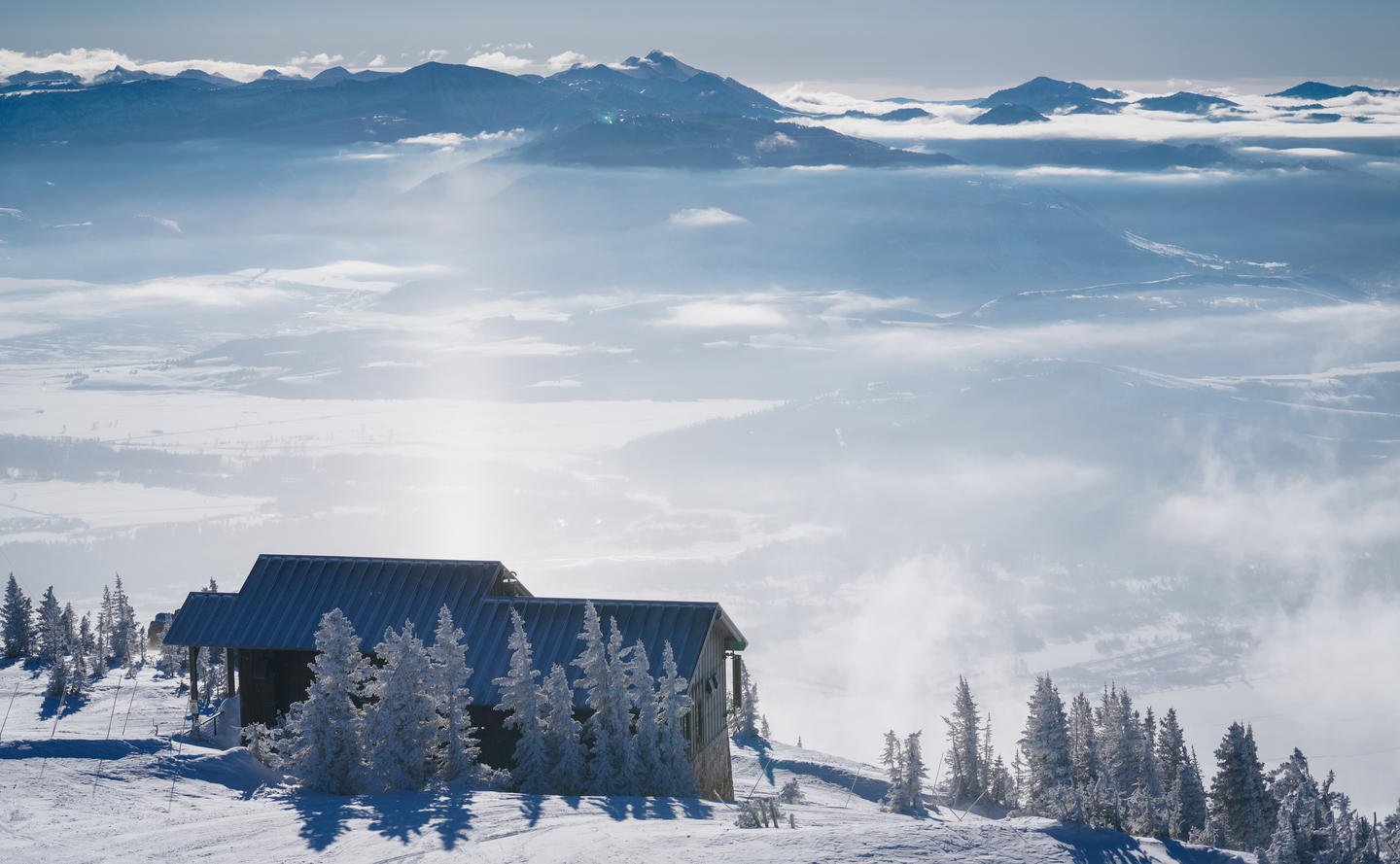Japan in Bloom
Witness the cherry trees of Tokyo and Kyoto resplendent with blossom as Sakura season reaches full bloom.
Amangani, Jackson Hole, United States
Photography by Yannick Boissenot
Words by David Page
We left Amangani just before dawn, with our skis and packs loaded into the back of the car. Venus hung low to the east over the Gros Ventres and Sleeping Indian peaks, against a backdrop of rising color. A red fox trotted northbound across a crust of old refrozen snow. From a thicket of bare willows, a moose watched the traffic pass. At the wheel was blond-bearded Andrew Whiteford, naturalist, historian, and one of the most respected skiers in Jackson Hole. Riding shotgun was bleary-eyed French photographer Yannick Boissenot.
Our window of opportunity was exactly three full days. The plan was to warm up on the first day with an easy lap from the top of the aerial tram at Jackson Hole Mountain Resort into the terrain beyond the southern boundary. Afterward we would move up into the vertical wildlands and granite hallways of Grand Teton National Park.

As we ventured further from Amangani's warm enfold, the outside temperature read -17 degrees Fahrenheit. Steam rose from the Snake River. “That is not a warm river,” said Whiteford. As a child, our guide, Whiteford, had learned to carve ski turns on 465 vertical feet of frozen marble at his local hill in Blandford, Massachusetts. Like so many others before him, he abandoned a promising career on Wall Street for the lure of adventure in the big mountains out west. Soon, with a series of videos, and by dancing with astonishing grace down extreme-consequence lines, he had earned a level of respect not lightly granted among serious skiers - skiers who visited Amangani for the adventure it promised and to take on pilgrimages like ours.
The Greater Yellowstone Ecosystem, as it’s known, comprises some 22 million acres of wild landscape, an area more than twice the size of Switzerland. It is one of the largest temperate-zone ecosystems on earth. At its core are Yellowstone and Grand Teton National Parks, buffered somewhat imperfectly from the insatiable appetites of humankind by five national forests, three national wildlife refuges, and a patchwork of other federal, state, and tribal lands. “This place is more ecologically intact today,” Andrew explained, “than at any time in the last 200 years.”



It was the beginning of February. There’d been no appreciable precipitation in nearly a month. An epidemic of irascibility had begun to spread amongst locals and visitors alike. The climate was changing, that much was obvious. As far as anyone knew it might never snow again. But then a cold front had come in, wrapping the peaks for a day or two in clouds and wind and wringing a rumor of new snow from the dry air.
"At the top of the tram the whole world spread out below us, cold and clear..."
At the top of the tram the whole world spread out below us, cold and clear—the wide river valley, the vast sage steppes, the distant mountain ranges. The smell of waffles drifted from Corbet’s Cabin, a signature treat from the small restaurant at the top of Redezvous Mountains. We could feel the sun up here, above the inversion. But the air was still cold enough to freeze your cheeks and fingers. We switched on our avalanche beacons, clicked into our bindings, and shoved off.


At the boundary gate was a beacon checker that flashed from red to green to confirm you were transmitting a signal. A thicket of signs with fine and not-so-fine print warned of the hazards beyond: avalanches, cliffs, hidden hazards. There were no ski patrol services out there. Stop! Warning! Caution! You are responsible for your decisions and actions, your own rescue. We passed through the rusted steel gate, which swung inward on a hinge, and traversed across to the north ridge of Cody Peak. To our left lay wide open, low-angle powder fields, tantalizingly untracked, glistening in the sun. “Don’t go down that way,” said Andrew, explaining how the initially-benign slope rolls over suddenly into a towering cliff band.
At the base of the ridge we strapped our skis to our packs, scrambled hand over hand in ski boots up an exposed outcropping of loose rock and sugar snow, then marched in a long, drawn-out line behind the ridge, following the bootsteps of those who had gone before us in the new snow. Beyond, to the west, was the dark cleft of Moose Creek and Bear Canyon. Then Idaho, Henry’s Fork of the Snake River, fields of alfalfa. More distant mountain ranges. The famous potato country beyond.



At the saddle we stood well back from the overhanging, yacht-sized cornices. We watched as camera operators launched drones and the first athletes threw tricks off rocks, painting high-speed brushstrokes down into the bowl below. The snow looked surprisingly soft, only minimally wind-effected, and not yet crusted by the sun.
We dove in, one after another. The new snow was velvety and smooth. There was a good firm bed of old chalk beneath. It was only a handful of turns, but it was easy, hero skiing, pure joy. At the bottom we shook our heads and grinned like kids. We couldn’t believe our luck. Our first morning out and we’d already caught a fish!

We had the taste of it now. We transitioned our skis back to our packs and booted eagerly up to the next ridge. Beyond, at the base of a striated prow of dark limestone marked on maps as No Name Peak, lay another open bowl of untracked powder, even grander than the first.
We took our time on the long traverse. High clouds sailed across the sun, the air tinged with misty light, the slope alternately illuminated and in shadow. When we were ready, when the light seemed just right, we gave ourselves over to the perfection of the medium: that feeling of floating on vapor, that momentarily eternal sense of grace that could never ever be erased and that we would spend the rest of our lives trying to recover.
"We gave ourselves over to the perfection of the medium: that feeling of floating on vapor..."


And then it was over. One by one we looked each other in the eyes, bumped gloved knuckles, nodded in deepest unspoken acknowledgement of what we had just shared. Then we sidestepped out of the drain and swooped like a pack of happy wolves down several miles and three thousand vertical feet of trees and glades and gullies, dust-on-crust, the long, rutted, crazy, high-speed James Bond steeplechase traverse, a quick chairlift ride to the smooth cat-track express overtaking slow-moving, unsuspecting humans and funneling like kings disguised as civilians back to the base of the tram, back to civilization. All those people. The colorful outfits. The unicorn-helmeted children on leashes. The creative, contorting ways of carrying skis from here to there. The canned music. The authentic laughter from the sundeck. The smell of hamburgers on a grill.
"...we looked each other in the eyes... nodded in deepest unspoken acknowledgment of what we had just shared"

In the latest of Aman’s Meditations, photographer Yannick Boissenot, adventure author David Page set out on ski mountain pilgrimage through the Grand Teton National Park. Starting in its foothills - Amangani’s peaceful home – they crisscross perfectly powdered peaks, coming face to face with the most challenging terrain and returning to tell their gallant tales.
Born in the French Alps, cameraman and mountain photographer Yannick Boissenot found his love of the great outdoors learning to ski and snowboard from a young age. His passion for photography followed when he was gifted a digital camera. Masterfully juggling skiing, climbing, the mountain and the camera, Yannick later attended an audiovisual school in Montpellier, before travelling the world in pursuit of his next adventure.
David Page is an award-winning journalist who has written for several US-national publications including the Discovery Channel, Los Angeles Times Magazine, The New York Times and Outside. His series on decision-making in avalanche terrain, The Human Factor, was a finalist for the 2015 National Magazine Award. A collection of David’s stories of exploration have also been anthologised in Travel Stories from Around the Globe, edited by National Geographic Traveller.